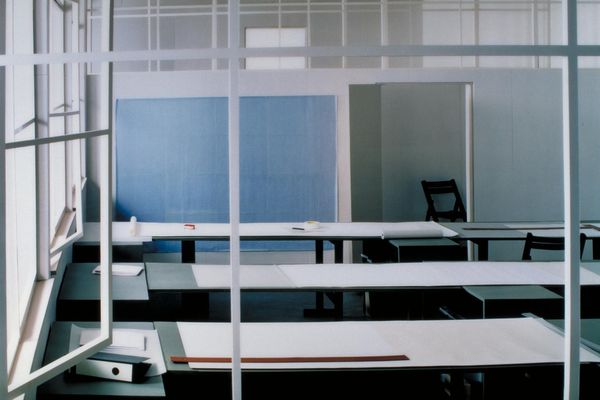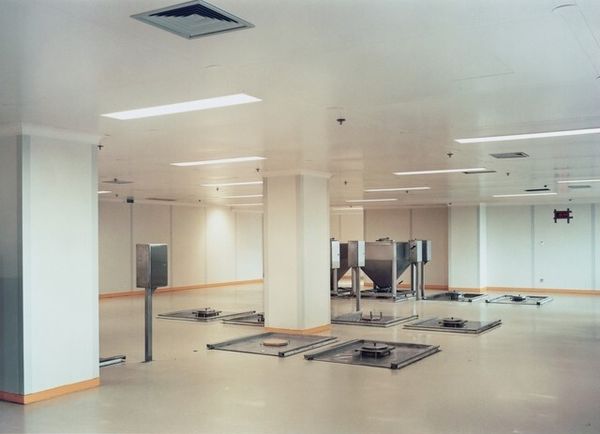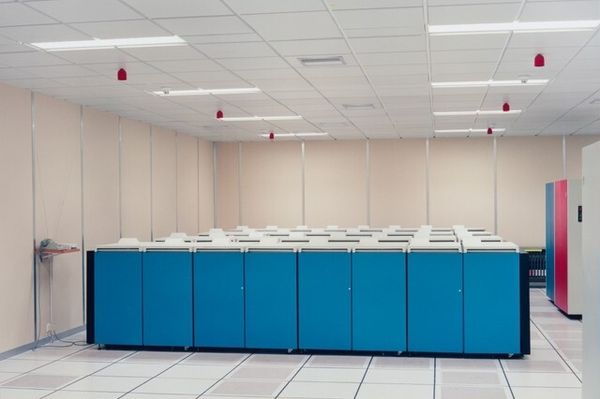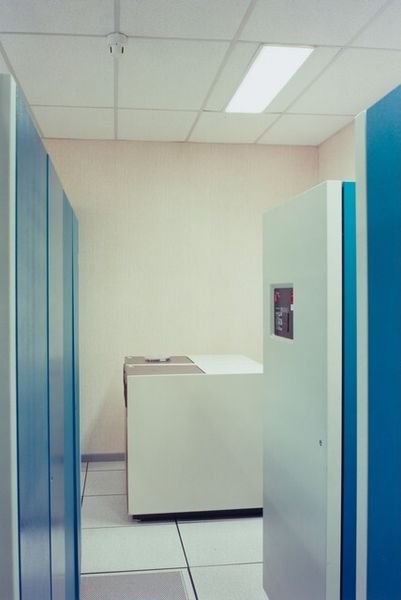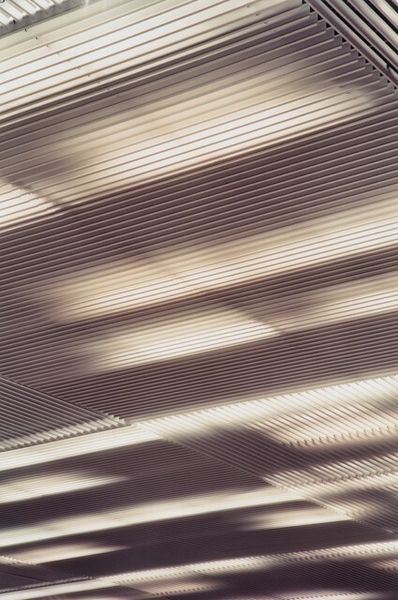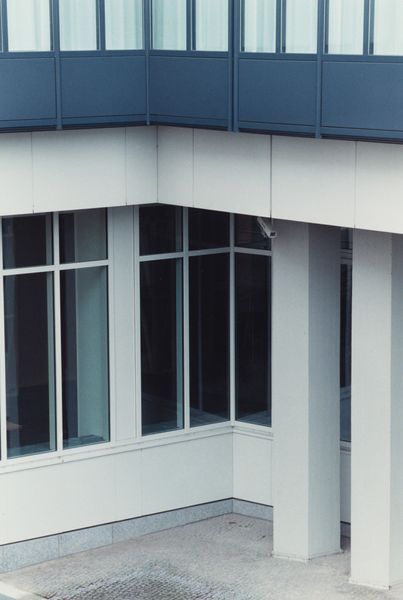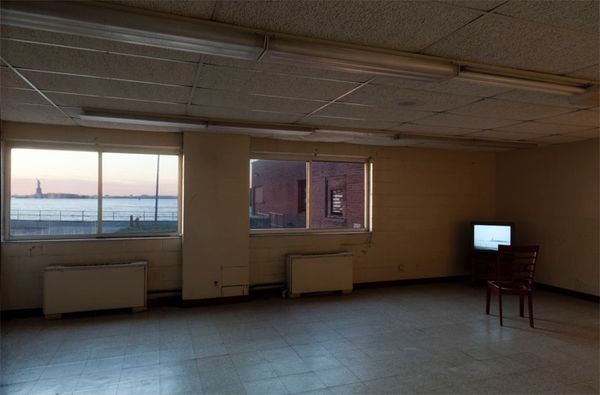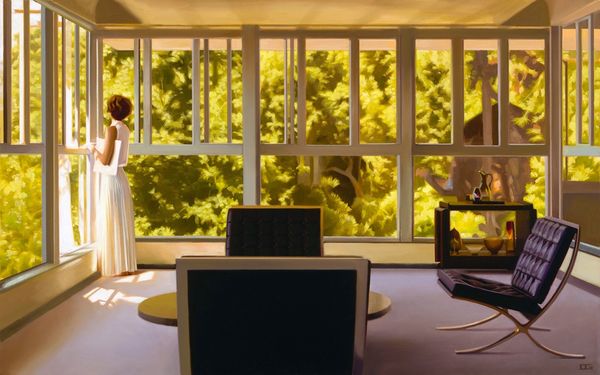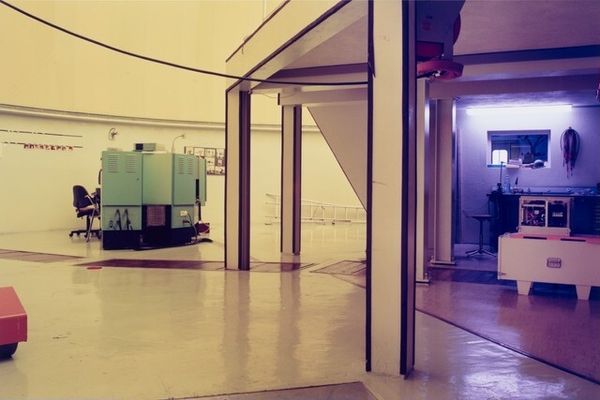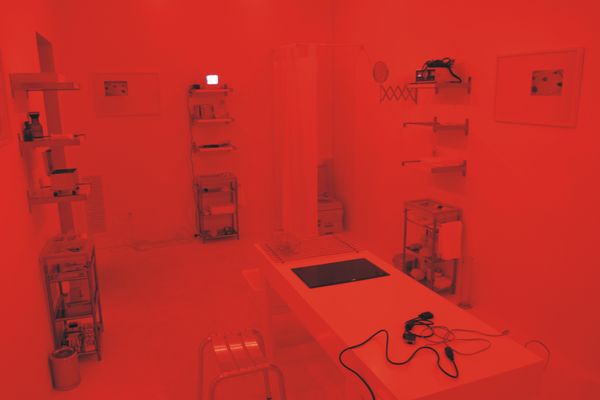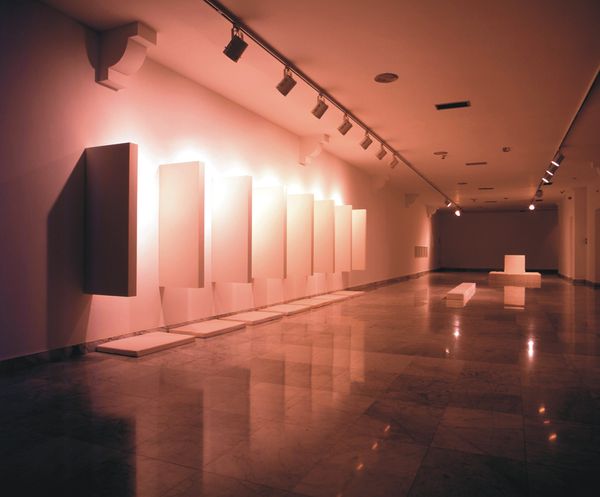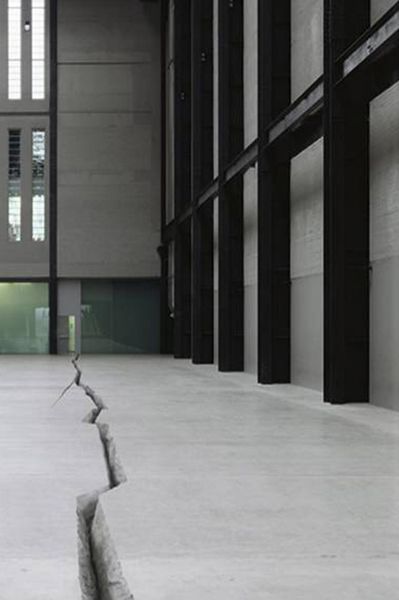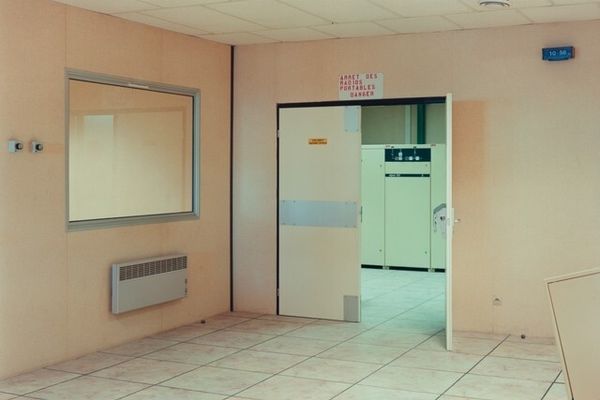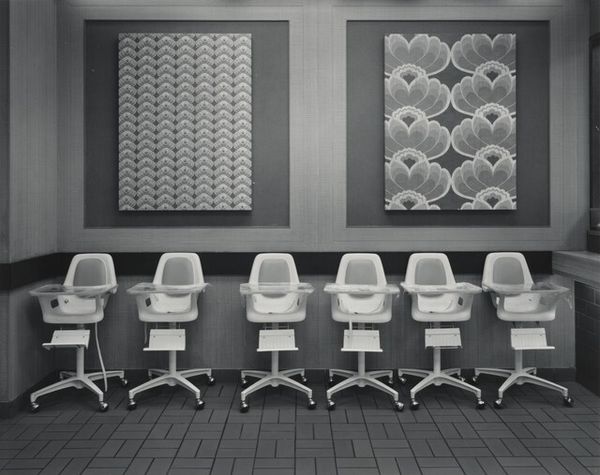
Unoccupied office, Mitsubishi, Vitre, France Possibly 1989 - 2006
0:00
0:00
#
interior architecture
#
interior design shot
#
building site documentary shot
#
empty interior photography
#
show home
#
showroom
#
industrial style
#
architecture model
#
showhome propping
#
glass architecture house
Dimensions: image: 17.7 × 26.5 cm (6 15/16 × 10 7/16 in.) sheet: 28 × 35.5 cm (11 × 14 in.)
Copyright: National Gallery of Art: CC0 1.0
Editor: This photograph, "Unoccupied office, Mitsubishi, Vitre, France," attributed to Lewis Baltz, gives us a glimpse inside an office space. It feels sterile, almost staged. What strikes me most is how the materials – the slick floor, the manufactured walls, the office equipment – dominate the scene. How do you interpret this work? Curator: I see Baltz pointing to the underbelly of corporate spaces, stripping away the veneer of progress and revealing the repetitive, almost dehumanizing conditions of labor. The materials themselves speak to the globalization of industry – the Mitsubishi nameplate, the generic office furniture, all contributing to a sense of placelessness, disconnected from local resources. Editor: So, it’s not just about aesthetics, but about the bigger system? The image, almost clinical, documents how those materials shape our daily experiences and influence society? Curator: Precisely! Consider the 'empty interior photography' tag; this is about showing how material arrangements influence worker conditions. How this emptiness affects one's well-being as one is meant to produce inside these locations every day. What is labor, then? A cycle that feeds capital, one room at a time. Editor: Interesting... So Baltz is suggesting that by examining these materials, we can start to question larger structures of power and production. It all makes you really start to consider the manufacturing, sourcing, and production involved with even just the basics of an office space like this. Curator: The photograph asks us to consider the whole trajectory: from resource extraction to final product, to eventual obsolescence and waste. This invites critique about consumption and environmental degradation, prompting us to see art in everything. Editor: Thank you! Now, looking at this scene I also have so much more to think about regarding our own working conditions. Curator: Indeed. A powerful image is about what lingers with you afterward.
Comments
No comments
Be the first to comment and join the conversation on the ultimate creative platform.
